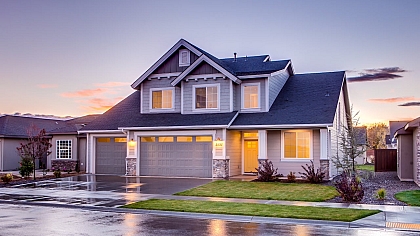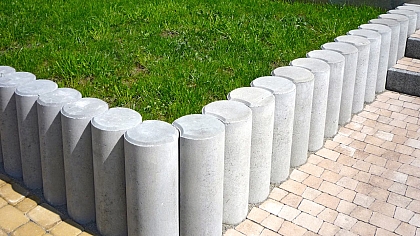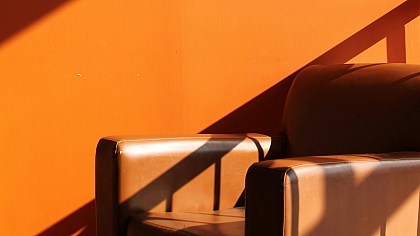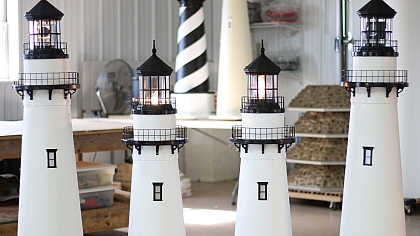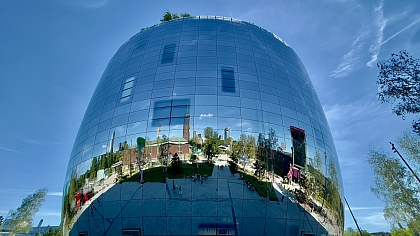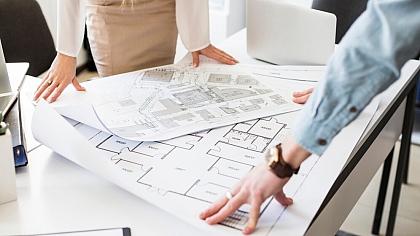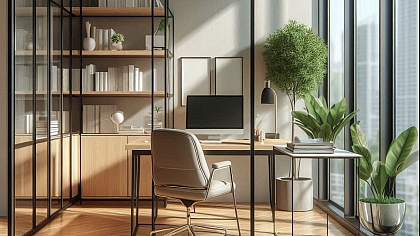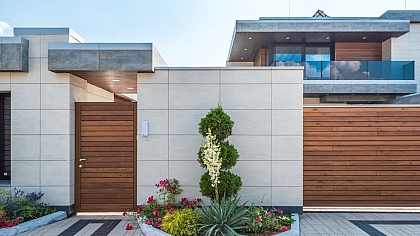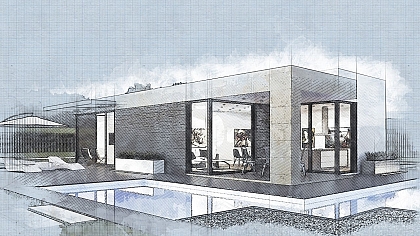
Architectural Insights on Plumbing for Home Designs
You want every element of your home design to flow seamlessly, and that includes a well-planned plumbing system. Consider pipe placement, fixture choices, and future maintenance when integrating plumbing into your architectural blueprints.
You're not alone if you worry about hidden leaks or inefficient layouts that inflate costs. Proactive planning addresses these challenges by focusing on material selection, water-efficient technology, and proper venting to protect your investment.
“Embrace custom solutions for unique fixtures and evolving trends,” says Dan's Plumbing resource. “Refining your layouts now spares you from costly future overhauls, creating a home that runs seamlessly for years.
Strategic Plumbing Layout Planning
The efficient positioning of water supply and drainage connections safeguards smooth functionality in a home. Thoughtful planning impacts convenience, compliance, and the long-term performance of plumbing.
- Identify fixture locations: Mark toilets and sinks early, ensuring supply and easy installation access.
- Allocate mechanical zones: Group pipes for maintenance and minimal disruption during upgrades or repairs.
- Consider flow rates: Size supply lines to maintain pressure, preventing temperature shifts or fluctuations.
- Optimize routes: Shorten pipe runs from heater to fixtures, reducing energy loss for delivery.
- Include accessible shut-offs: Position valves, enabling service or repairs without interrupting the entire system.
Review code requirements for fixture placement and pipe dimensions. A helpful practical guide to drafting a plan appears at this article on plumbing basics.
Innovative Plumbing Trends 2025
Modern plumbing developments emphasize eco-friendly fixtures, remote connectivity, and water-saving solutions. Trends also focus on improved system longevity and user-friendly technology for seamless daily experiences.
Touchless Advancements
Hands-free faucets and sensors are appearing in residential bathrooms, helping reduce water waste. These upgrades also limit germ spread, which is crucial for shared spaces.
Smart Monitoring Systems
Digital leak detectors track water usage patterns and provide alerts for potential problems. Automated shutoff mechanisms can further minimize damage from hidden or slow leaks.
Eco-Conscious Materials
Manufacturers now offer faucets and showerheads made from recycled metals or plastics. Such unique, creative innovations strongly resonate with homeowners prioritizing sustainability and resource-efficient fixtures.
Adopting these trends boosts daily comfort and environmental awareness. Staying current with emerging plumbing technology can lower utility bills and elevate your home's overall livability.
Optimizing Fixture Selection
Choosing appropriate fixtures transforms daily routines. Proper textures, materials, and finishes can enrich aesthetics while remaining durable enough to withstand continuous use and varying demands.
Consulting Experts
Professional designers and architects share insights on brand quality, performance metrics, and style compatibility. Their guidance avoids costly mistakes and ensures a cohesive, functional layout.
Balancing Price and Quality
Determine your budget early and explore materials accordingly. Higher-grade fixtures usually last longer, effectively reducing long-term repair costs and preserving overall value in your home.
Coordinated Styles
Matching sink faucets, showerheads, and accessories cultivate aesthetic unity. Sleek finishes or classic contours help achieve a personalized look that resonates with your interior taste.
Rock-solid fixture choices blend longevity and flair, enhancing everyday comfort. Proper research, paired with professional guidance, offers you peace of mind and well-coordinated design results.
Sustainable Green Plumbing Practices
Minimizing environmental impact starts with conscious material choices and water-efficient technologies. Green solutions lower monthly expenses and help tackle serious broader challenges like resource scarcity.
- Adopt low-flow fixtures: Faucets, showers, and toilets designed for reduced water usage cut bills.
- Install rainwater systems: Harvest runoff for irrigation or cleaning, reducing reliance on municipal supply.
- Reuse greywater: Divert used water to lines for lawns or toilet flushing, decreasing consumption.
- Select sustainable pipes: Choose materials that handle corrosion and temperatures, minimizing replacements and downtime.
- Opt for efficient heating: Tankless units conserve energy, diminishing carbon footprints and hot-water demands.
Further ideas include responsible insulation and leak-detection systems.
Efficient Drainage System Design
Designing drainage with attention to slope and venting is vital. Properly sloped lines move waste effortlessly, preventing backups and unpleasant odors in residential environments.
Focus on Layout
Position drains beneath fixtures to minimize pipe turns. Consider avoiding sharp angles that can cause blockages or reduce wastewater flow efficiency over time.
Ventilation Matters
Vents balance air pressure, supporting smooth drainage. Without adequate venting, water flow slows, and fumes can escape, impacting health and comfort inside your home.
Cleanout Accessibility
Installing accessible access points simplifies future maintenance. Locate them at key junctions, ensuring quick clearing of clogs or debris buildup within your drainage lines.
Efficiently designed drainage reduces the chance of costly repairs. Planning meticulously upfront delivers consistent performance and contributes to a healthier indoor environment.
Smart Valve and Shutoff Implementation
Strategically placing shutoff valves prevents widespread water damage. Valves offer you the freedom to isolate sections, reducing stress during repairs and simplifying future fixture updates.
Emergency Preparedness
An emergency shutoff valve is essential near main supply lines. Accessible controls let you respond quickly to major leaks, safeguarding property against water infiltration.
Zone-Based Control
Dividing plumbing into zones allows individualized shutdown. This approach confines issues within targeted regions, minimizing service disruptions throughout the rest of the home.
Smart Shut-Off Systems
Automated valve controls detect unusual water flow patterns and close supply lines remotely. These solutions protect you from unexpected bursts or excessive usage spikes.
Valves foster efficiency and convenience. Whether you rely on manual or advanced systems, consistent monitoring keeps everything running smoothly and reduces repair headaches long-term.
Balancing Aesthetics and Functionality
Harmonizing visual appeal with efficient performance elevates any living space. Thoughtful plumbing integration enhances your daily interactions and prevents eyesores caused by haphazard installations.
- Choose complementary fixtures: Align faucets, handles, and hardware with overarching design motifs for a unified, polished appearance.
- Hide essential components: Conceal pipes behind access panels or cabinetry while maintaining serviceability when repairs become necessary.
- Blend materials tastefully: Combine metal, tile, and stone elements without compromising ergonomic ease or future retrofits.
- Keep lines clean: Route pipes methodically, avoiding clutter and maximizing open floor space for comfort and movement.
- Respect proportions: Opt for fixture sizes that harmonize with room dimensions, preventing overwhelming or underwhelming outcomes.
Combining style with usability guarantees a pleasant environment and reliable water delivery. Balanced trenchwork and fixture alignment also reduce maintenance emergencies over time.
Effective Pipe Material Selection
Picking suitable materials ensures durability under varying temperature and pressure conditions. Correct choices save money on repairs and minimize structural damage from corrosion or rupture.
Weighing Costs
Some materials are cheaper initially but degrade faster. An investment in higher-grade pipes may offset replacement expenses, optimizing your budget over the building's lifespan.
Temperature Factors
Metal piping endures heat better than some plastics. However, advanced polymer options handle expansions effectively and resist scaling, making them preferable in specific applications.
Corrosion Resistance
Certain alloys and coated piping mitigate rust development. This precaution extends pipe longevity, sustaining water purity and avoiding unsightly residue or discolored fixtures.
Thorough research on pipe performance and compatibility builds a stable infrastructure. Collaboration with engineers refines final decisions, reinforcing safety and cutbacks on long-term maintenance.
Creative Plumbing as Architectural Art
Transforming pipes into aesthetic features challenges design norms. Bold expressions of plumbing can reveal metallic curves or dramatically exposed fixtures, redefining a space's character.
Industrial Chic Elements
Exposed overhead lines highlight mechanical authenticity. Copper or brass finishes exude warmth and complement modern loft designs, embracing raw structural beauty.
Artisan Fixture Selection
Handcrafted faucets and sculptural showerheads function as statement pieces. Integrating these unique items personalizes each corner of the home, delighting residents and visitors.
Backlighting and Accents
Illuminated piping or accent lighting near faucets elevates the ambiance. Subtle highlights draw attention to smooth contours and meticulous craftsmanship, merging art with everyday utility.
Imaginative installations spark conversations while fulfilling vital utility roles. You combine flair and functionality, shaping living areas that simultaneously amuse and serve practical demands.
Economic Plumbing Budget Management
Maintaining finances requires shrewd planning and contingent allowances. Monitoring expenditures consistently protects against overspending while keeping quality standards intact for a hassle-free building process.
- Analyze labor quotes: Compare multiple proposals and confirm credentials before deciding who manages your plumbing installation or repairs.
- Value-engineer materials: Examine alternatives with similar warranties but friendlier price points, preventing ballooning supply costs on large-scale jobs.
- Schedule effectively: Coordinate trades and deliveries to avoid downtime, minimizing labor hours and expensive on-site hold-ups.
- Review project scope: Keep track of changes across all phases, limiting sudden design alterations that inflate expenses.
- Plan for contingencies: Reserve a buffer for unforeseen complications like hidden pipe damage or supply chain delays.
Auditing finances at regular intervals preempts unexpected fees. Thoughtful budgeting fosters streamlined progress and safeguards your bottom line during significant or minor plumbing projects.
Sealing Your Flow
You ensure a streamlined and stylish result by thoughtfully combining efficient fixtures, eco-friendly strategies, and inspired designs. For more in-depth guidance, visit Dan’s Plumbing Info. Embrace these insights with confidence to finalize your dream plumbing scheme. Get started now for success.

